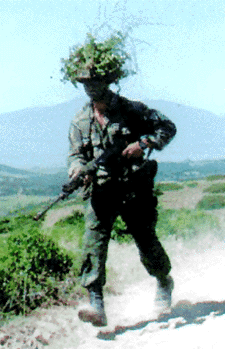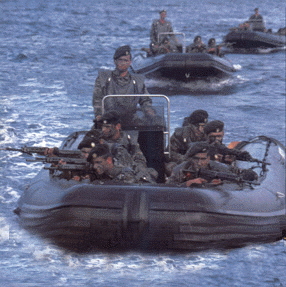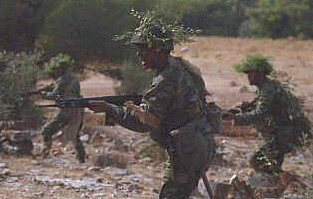

Greece has always maintained a purely defensive posture in the face of continuing threats
on its sovereignty by bordering nations. Their Special Forces doctrine is much the same,
being geared towards small but highly effective rapid-reaction forces which can counter an
invading army. The roles of the various Raiding Forces units are very similar, the main
difference being each unit's methods of insertion into combat areas, and various roles
attributed to each unit's specialised training.
1 SKD (Syntagma Katadromon)
The spearhead of the Raiding Forces is 1 SKD, the 1st Raiding Regiment. It consists
of 3 Raiding Squadrons, or Mires - Beta (BMK), Delta (DMK) and Epsilon (EMK) - all
of which are based in Macedonia. BMK was formed at Vouliagmeni, Athens in August of
1947 and took part in Civil War operations in Thessaly, Central Greece, Epiros, West
Macedonia and Euvoia. The Squadron is currently based at Naousa. DMK was
established at the port city of Volos, Thessaly in December 1947 and operated in all
regions of Greece during the Civil War. It is based at Rendina. EMK was formed in
April 1949 and took part in Civil War operations until December 1949. The Squadron is
based at Drama.
In wartime, 1 SKD would be expected to operate primarily behind enemy lines, gathering
intelligence on enemy numbers, positions and movements; conducting lightning raids on
enemy structures, columns and patrols; cutting the enemy's lines of communication;
organising and training resistance groups; abducting or terminating enemy personnel;
rescuing captured personnel.



![]()